
This media resources page provides members of the media with information; resources; and broadcast-, print-, and web-quality imagery developed during the Battle of the Atlantic: Archaeology of an Underwater WWII Battlefield expedition.
NOAA and its research partners are surveying, for the first time since they sank more than 70 years ago, the remains of two ships that were involved in a convoy battle off North Carolina during World War II. The “Battle of the Atlantic: Archaeology of an Underwater WWII Battlefield” expedition is part of an ongoing research project to document and highlight a little-known, but important, chapter in the nation’s maritime history.
In July 1942, German submarine U-576 sank the freighter SS Bluefields during the battle of Convoy KS-520 off Cape Hatteras, N.C. The convoy and its U.S. military escorts fought back, sinking the U-boat with return fire from a U.S. Navy Armed Guard crew and an aerial depth charge attack.
In 2014, NOAA discovered the two vessels 35 miles offshore in approximately 700 feet of water, resting just 200 yards apart.
Now, from August 22 through September 6, 2016, scientists will return to the site to conduct a comprehensive characterization and interpretation of the shipwrecks and the surrounding battlefield, along with related World War II shipwrecks lost in the area, using advanced data acquisition and visualization technologies. This study will provide data to tell an incredible story of a World War II battlefield just a few miles off America’s coast.
On this page: Video | Images | Press Releases | Additional Resources | Contact Information
Highlights from over the course of the expedition (2:02 runtime). Video courtesy of John McCord, UNC Coastal Studies Institute/NOAA - Battle of the Atlantic expedition. Download (mp4, 244.1 MB).
A collection of both topside and underwater images and video from the expedition thus far (10:08 runtime). Video courtesy of John McCord, UNC Coastal Studies Institute/NOAA - Battle of the Atlantic expedition. Download (mp4, 1.24 GB).
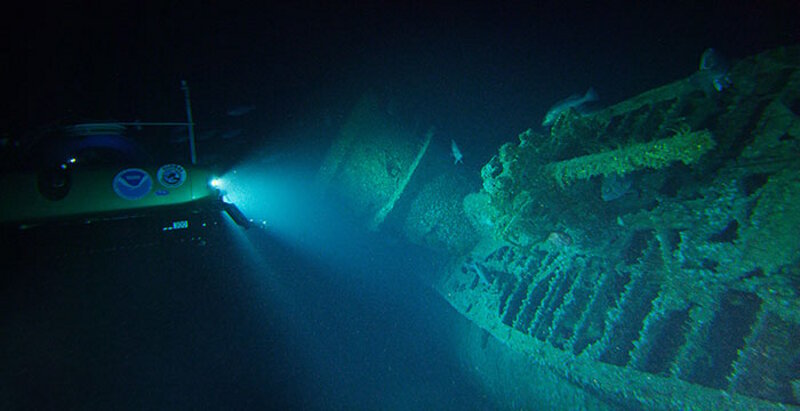
During the very first dive of the expedition, scientists located and explored the German U-576. This was the first time since the submarine was sunk on July 15, 1942, that anyone had laid eyes on the vessel. Here, Project Baseline's Nemo submersible shines its lights on the U-boat lying on its starboard side, showing the submarine's conning tower and the deck gun in the foreground. Image courtesy of John McCord, UNC Coastal Studies Institute - Battle of the Atlantic expedition. Download larger version (jpg, 6.5 MB).
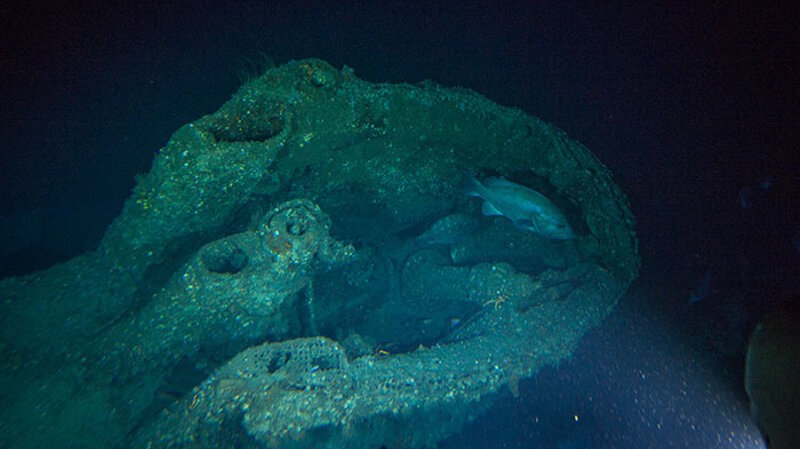
The conning tower of U-576 as viewed from the mini-sub. Entry was gained to the U-boat through a watertight hatch located in the center of the conning tower. The attack periscope can be seen in the near the back of the tower. Image courtesy of Joe Hoyt, NOAA - Battle of the Atlantic expedition. Download larger version (jpg, 22.0 MB).
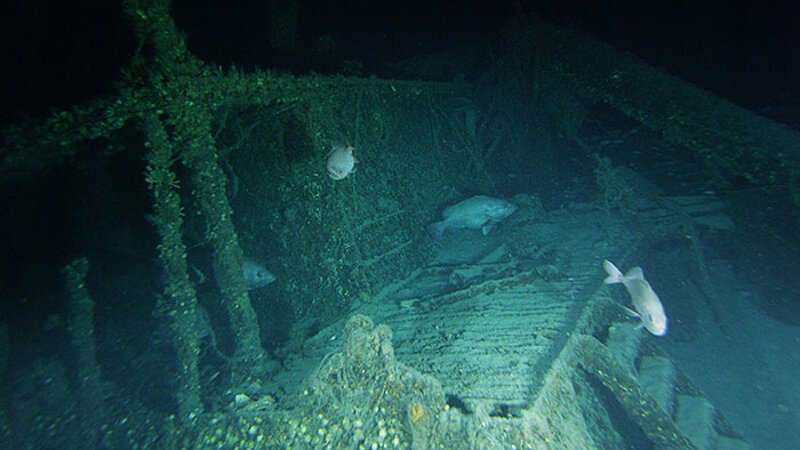
A video frame grab of the stern cabin of the SS Bluefields. Bluefields is very intact and rests in 730 feet of water, only 600 feet from U-576. Image courtesy of John McCord, UNC Coastal Studies Institute - Battle of the Atlantic expedition. Download larger version (jpg, 10.3 MB).
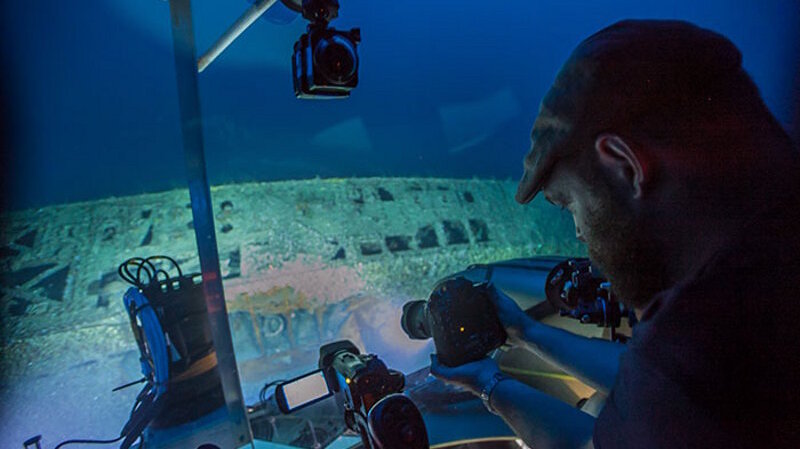
Joe Hoyt, Maritime Archaeologist with the NOAA Office of National Marine Sanctuaries, documents the damage to U-576. Image courtesy of Robert Carmichael, Project Baseline - Battle of the Atlantic expedition. Download larger version (jpg, 4.5 MB).
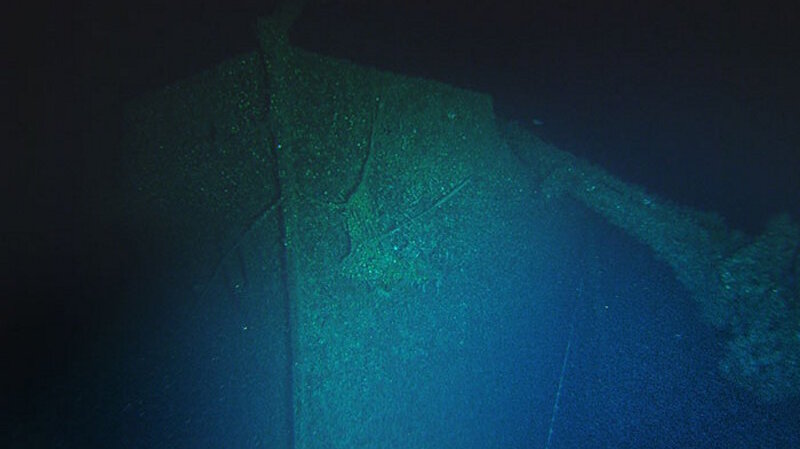
A video frame grab of the bow of the SS Bluefields. The collapsed forward deck crane hangs off the bow of the Bluefields. An anchor can be seen hanging in place in the hawse pipe. Image courtesy of John McCord, UNC Coastal Studies Institute - Battle of the Atlantic expedition. Download larger version (jpg, 5.8 MB).
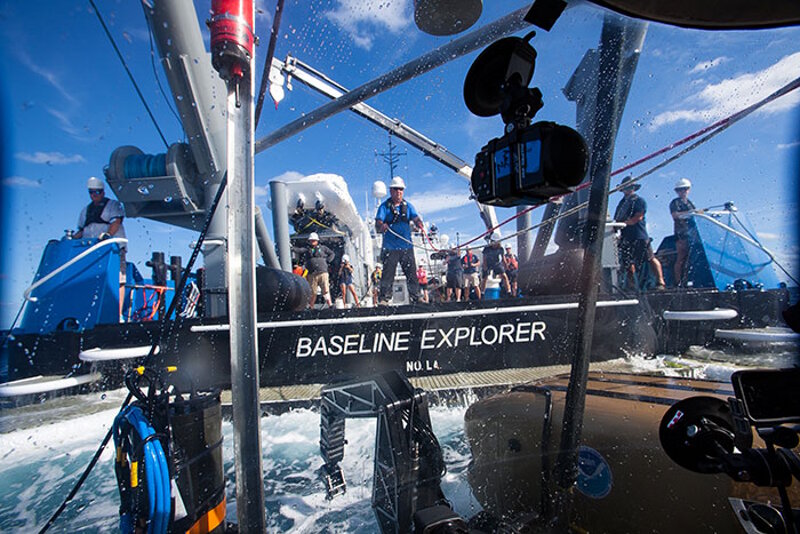
A first-person view of the launching of the mini-sub Nemo off the stern of the R/V Baseline Explorer, Project Baseline’s 150-foot research vessel. Image courtesy of John McCord, UNC Coastal Studies Institute - Battle of the Atlantic expedition. Download larger version (jpg, 4.1 MB).
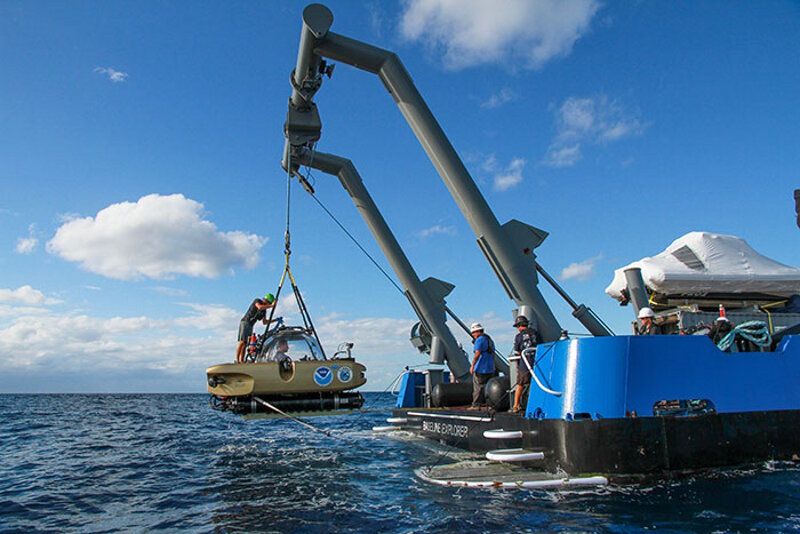
Project Baseline's Nomad submerible is hoisted aboard R/V Baseline Explorer after resurfacing from a dive. Image courtesy of David Sybert, UNC Coastal Studies Institute - Battle of the Atlantic expedition. Download larger version (jpg, 16.6 MB).

The 88mm deck gun of the U-576 was used for surface engagements and could fire a variety of shells from the watertight ready-ammunition locker which can be found forward of the gun on the port side. Image courtesy of Joe Hoyt, NOAA - Battle of the Atlantic expedition. Download larger version (jpg, 21.0 MB).
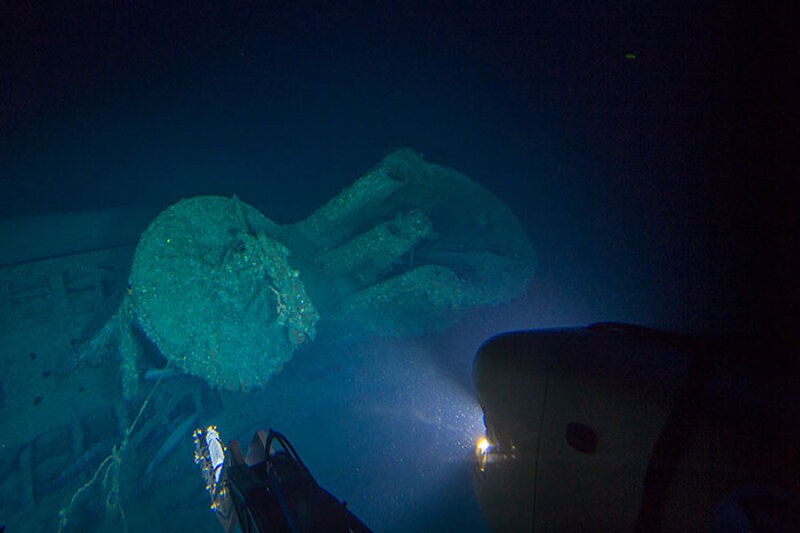
The aft section of the U-576's conning tower, also known as the wintergarten, which served as a platform for the 20mm anti-aircraft flak gun. Image courtesy of Joe Hoyt, NOAA - Battle of the Atlantic expedition. Download larger version (jpg, 11.3 MB).
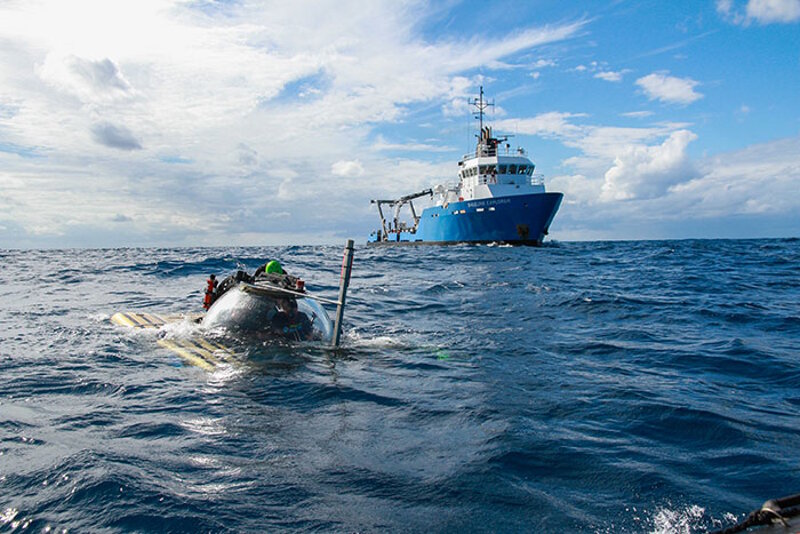
Project Baseline's mini-sub Nemo prepares to dive. Image courtesy of John McCord, UNC Coastal Studies Institute - Battle of the Atlantic expedition. Download larger version (jpg, 16.3 MB).
A first look at two WWII Battle of the Atlantic shipwrecks (August 22, 2016).